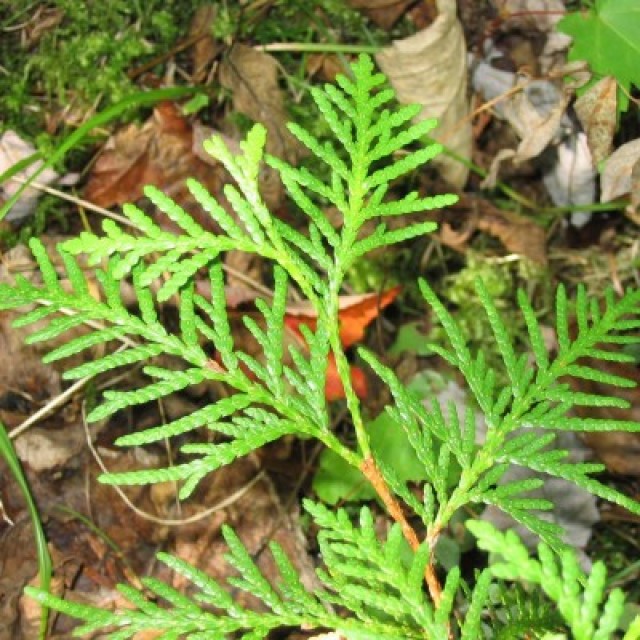COMMON NAME
Northern white cedar
SCIENTIFIC NAME
Thuja occidentalis
ALSO KNOWN AS
American arborvitae, Eastern arborvitae, Eastern white cedar, giizhik (Ojibwe), Swamp cedar
Plant family
Cypress (Cupressaceae)
Plant group
Conifers
Known as giizhik by the Ojibwe. Small to medium sized tree that can be found along streams, in bogs and cedar swamps. When crushed, the needles will produce an aromatic cedar smell.
284 reports
101+
OBSERVERS
284+
OBSERVATIONS
Identification hints
White Cedar is easily recognized by its small, flat, scale-like leaves that are tightly bond to the twigs. Small cones are often present. When crushed, the needles will produce an aromatic cedar smell.
Did you know?
Cedar is called "deer candy" and is favorite browse for deer. Burned twigs were used as incense in religious ceremonies and as a disinfectant to fumigate a house for smallpox; a cedar compound containing charcoal was pricked into the temples with needles for headaches; a compound containing leaves was used as a cough syrup; and the leaves were used in an infusion of decoction for headaches, coughs, and as a blood purifier. Northern white cedar was also very important as a utility wood, and its branches used for temporary bedding.
DISTRIBUTION IN TH U.S.
There is no information available about this species.
HABITAT
There is no information available about this species.
See Menu
- 2021 Chicago Botanic Garden. All Rights Reserved.
-
Creative Commons
BY-NC-SA 4.0 - Terms of Use
- Privacy Policy
- Data Sharing and Citation Policies
- 2021 Chicago Botanic Garden. All Rights Reserved.



